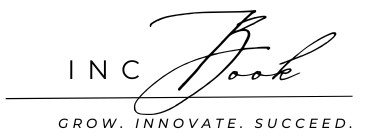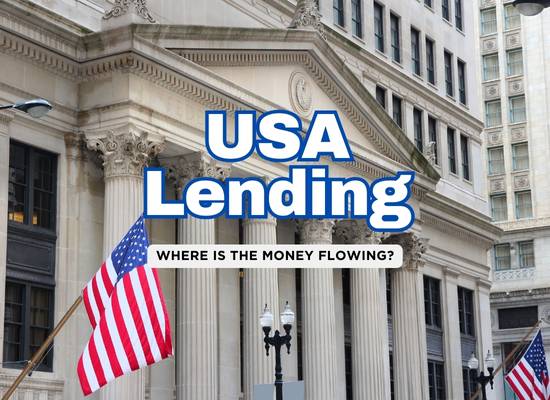What’s hot, what’s drying up, and where the money is really flowing
Business financing in the U.S. is evolving fast—and not always in ways founders expect. With interest rates stabilizing, traditional banks tightening their lending criteria, and fintechs racing to fill the gaps, getting funding in 2025 is no longer just about having a good idea. It’s about knowing where to look, what to expect, and how to position your business like a pro.
In this guide, we’re breaking down the 10 real-world trends shaping how American businesses get funded right now—from Main Street to Silicon Valley.
1️⃣ Bank Loans: Tighter Rules, Slower Approvals
Traditional banks are still the go-to for many small and midsize businesses, but loan approvals have dipped slightly in early 2025. Why?
- Higher documentation standards
- Lower risk appetite among regional banks
- More scrutiny on business models and collateral
Approval timelines are longer, especially for businesses under 3 years old or with inconsistent cash flow. But if you’re well-prepared and have a solid relationship with your banker, SBA-backed loans are still a strong path.
Quick Insight: Community banks and credit unions are slightly more flexible than national banks—especially in rural and underserved areas.
2️⃣ Fintech Lending: Fast Money, Higher Cost
Fintech lenders are filling the gaps banks won’t touch—but it comes at a price.
Think: Square Loans, OnDeck, Fundbox, and Shopify Capital.
What’s new in 2025:
- Embedded lending is booming (e.g., platforms offering loans based on sales data)
- Approval within hours, but APR often exceeds 25%
- Great for fast cash needs or short-term working capital
These are best used strategically—not for long-term debt or major investments.
Use Case: You’re a growing eCommerce store with $50K in monthly sales and need $20K to bulk order inventory ahead of summer—fintech wins here.
3️⃣ Business Credit Lines: Growing but Underused
Many business owners still overlook credit lines in favor of lump-sum loans. But in 2025, flexible credit lines are gaining traction—especially as a hedge against uneven revenue months.
Key trends:
- More online lenders are offering revolving business credit
- Banks are pairing lines with merchant services or checking accounts
- Interest is only paid on what you use
Big Win: If your revenue fluctuates or you deal with long A/R cycles (think service businesses or B2B vendors), a credit line can keep you afloat without taking on unnecessary debt.
4️⃣ Equipment Financing: Still Strong, Especially in Niche Industries
Need a food truck, CNC machine, or commercial fryer? Equipment loans and leases remain one of the most accessible forms of financing—even in a cautious market.
✅ What’s working in 2025:
- Lenders are more comfortable financing tangible, income-generating assets
- Many offer 0% down options for strong-credit borrowers
- Startups can often qualify if the equipment itself has strong resale value
📈 Demand is rising in:
- Manufacturing & fabrication
- Commercial kitchens & food services
- Logistics/fleet-based operations
Watch out for: Balloon payments, early payoff penalties, or bundled maintenance clauses. Always compare lease vs. purchase before signing.
5️⃣ Government & SBA-Backed Lending: Reliable, but Paperwork-Heavy
The SBA 7(a) and SBA 504 loan programs remain critical lifelines for new and growing businesses in 2025—especially when banks say “not yet.”
📝 What’s happening now:
- SBA is expanding outreach to minority- and women-owned businesses
- Loan caps remain high (up to $5 million)
- Rates are lower than most private options, but expect 4–8 weeks for approval
The catch? You’ll need a full financial package: business plan, cash flow projections, personal credit history, and more. But if you’re willing to jump through the hoops, you’ll often get better terms than with any other lender.
Pro Tip: Work with an SBA-preferred lender to cut down on red tape.
6️⃣ Business Credit Cards: Strategic Tool, Not Just a Convenience
In 2025, more businesses are using credit cards as working capital tools—not just for travel or office supplies.
🔥 New trends:
- High-limit cards with cashback or crypto rewards
- 0% APR offers lasting up to 18 months
- Business cards linked to accounting software for real-time cash tracking
But proceed with caution:
- Many cards now come with variable rates exceeding 20% after promo periods
- Some fintech “charge cards” like Brex and Ramp require daily or weekly repayment
Smart Move: Use a 0% card for predictable short-term expenses (like seasonal inventory) and pay it off before the rate jumps.
7️⃣ Venture Capital: Chilled but Focused
VC funding isn’t dead—but it’s definitely gotten colder and more cautious in 2025. Investors are now laser-focused on:
- Startups with strong unit economics
- Companies that can show profitability sooner
- Sectors like AI, defense tech, cleantech, and enterprise software
Series A and B rounds are harder to raise, while pre-seed and seed funding still has momentum through angel networks and micro-VCs.
If you’re pitching:
- Come armed with traction, not just vision
- Investors want a path to cash flow, not just market share
- Down rounds and valuation resets are common—don’t take it personally
8️⃣ Grants & Non-Dilutive Capital: More Accessible Than You Think
Grants aren’t just for nonprofits anymore. In 2025, more state, federal, and private grants are available for for-profit businesses—especially those focused on:
- Clean energy
- Manufacturing
- Agriculture
- Community development
What’s new:
- Simplified application portals for federal programs (e.g., grants.gov, SBIR)
- Regional funds targeting underserved business zones
- Corporate-sponsored competitions and accelerators offering equity-free capital
Pro Tip: Assign one team member to search and apply weekly—many great programs go unnoticed and under-applied.
9️⃣ Crowdfunding: From Product Launches to Community Capital
Crowdfunding is no longer just for gadgets. In 2025, platforms like WeFunder, Republic, and Mainvest are helping small businesses raise capital directly from the public—with or without giving up equity.
Two key models:
- Rewards-based: (Kickstarter-style) good for product-based businesses
- Investment-based: lets everyday people own a slice of your company
Why it’s growing:
- Builds community + marketing momentum
- Bypasses traditional gatekeepers
- Good fit for restaurants, breweries, tech hardware, media, and consumer brands
Warning: Crowdfunding takes serious planning—don’t wing it.
🔟 Peer-to-Peer & Alt Lending: Fast Growth, Mixed Results
New players are emerging daily in the peer-to-peer lending and alternative debt space. Think business loans from investor networks, private groups, or blockchain-based smart lending platforms.
2025 trends:
- P2P lenders offering up to $500K for high-cashflow businesses
- New platforms verifying businesses with AI + real-time data
- Tokenized lending (Web3-style) emerging in niche communities
⚠️ Be cautious—this space is still lightly regulated, and terms can vary wildly. Always read the fine print, and have a lawyer look over anything long-term.
In 2025, the money is still out there—but it’s moving in new directions. Traditional banks are cautious, fintechs are aggressive, and non-dilutive capital is growing fast for those who know where to look.
The key to winning in this new funding landscape is to:
- Stay flexible with your financing strategy
- Match the right funding type to the right need
- Always read the fine print—especially with newer lenders
Whether you’re launching a product, expanding your team, or just trying to survive a tough quarter, there’s a smart funding option waiting—if you know where to look.


